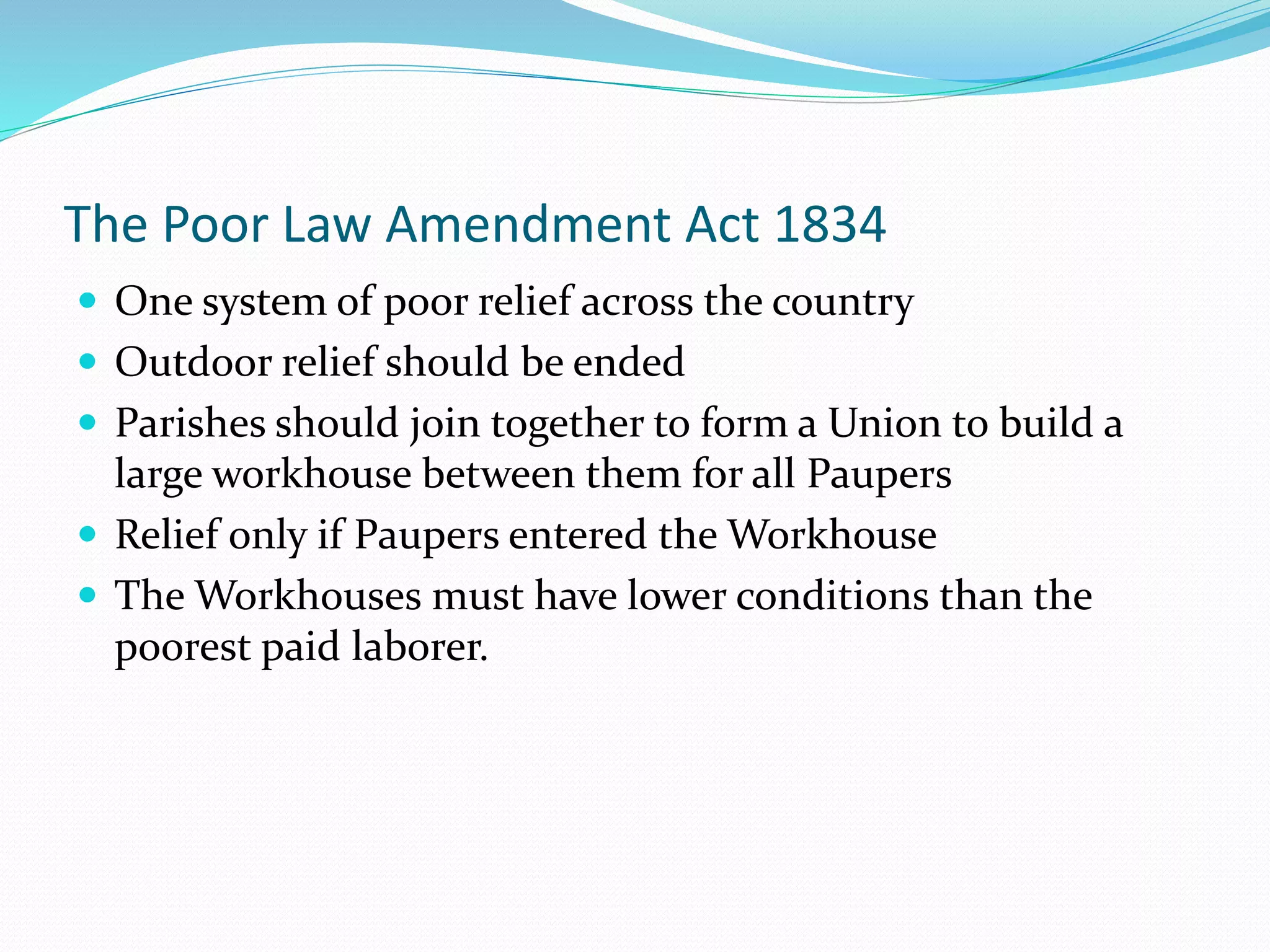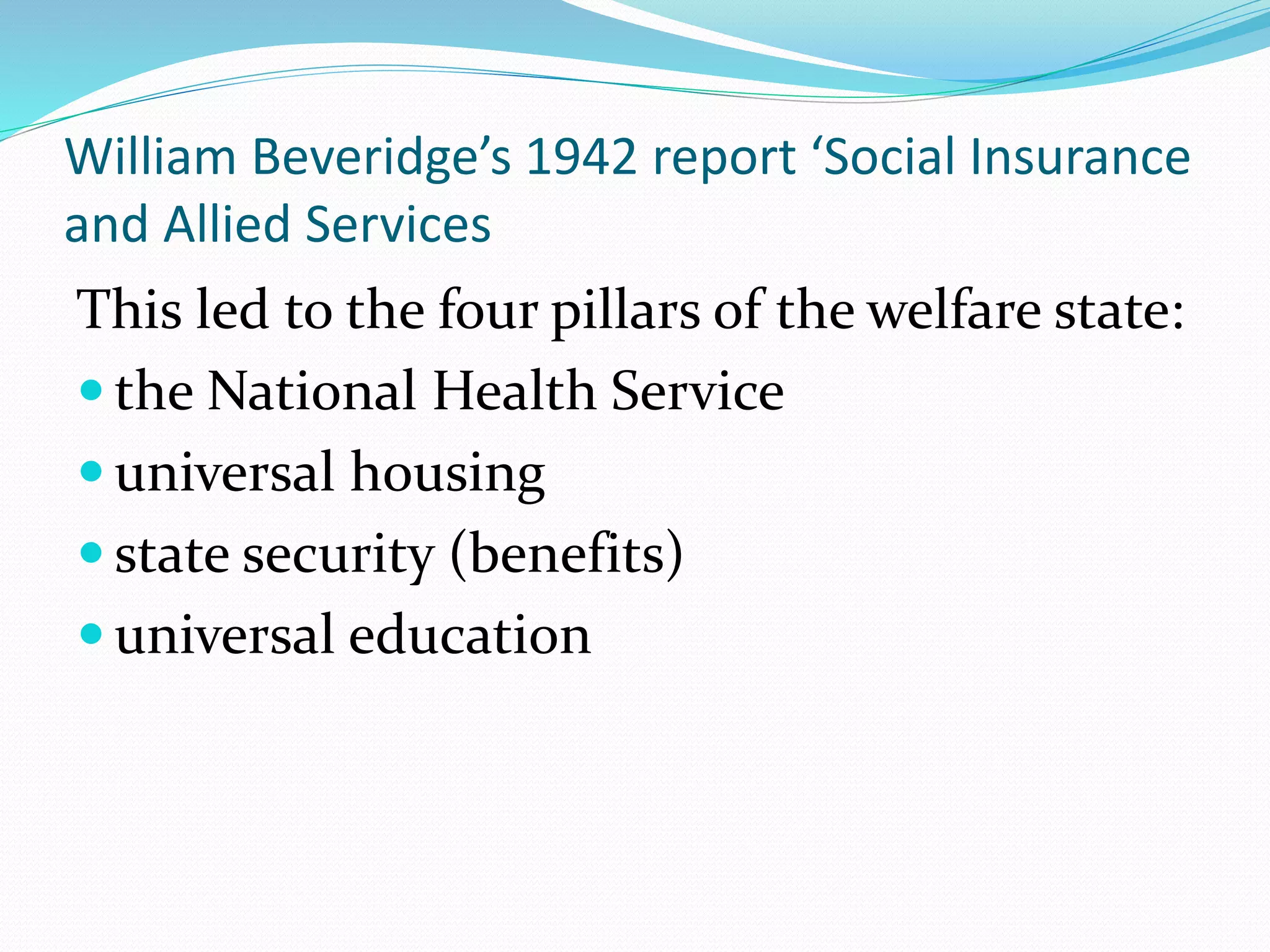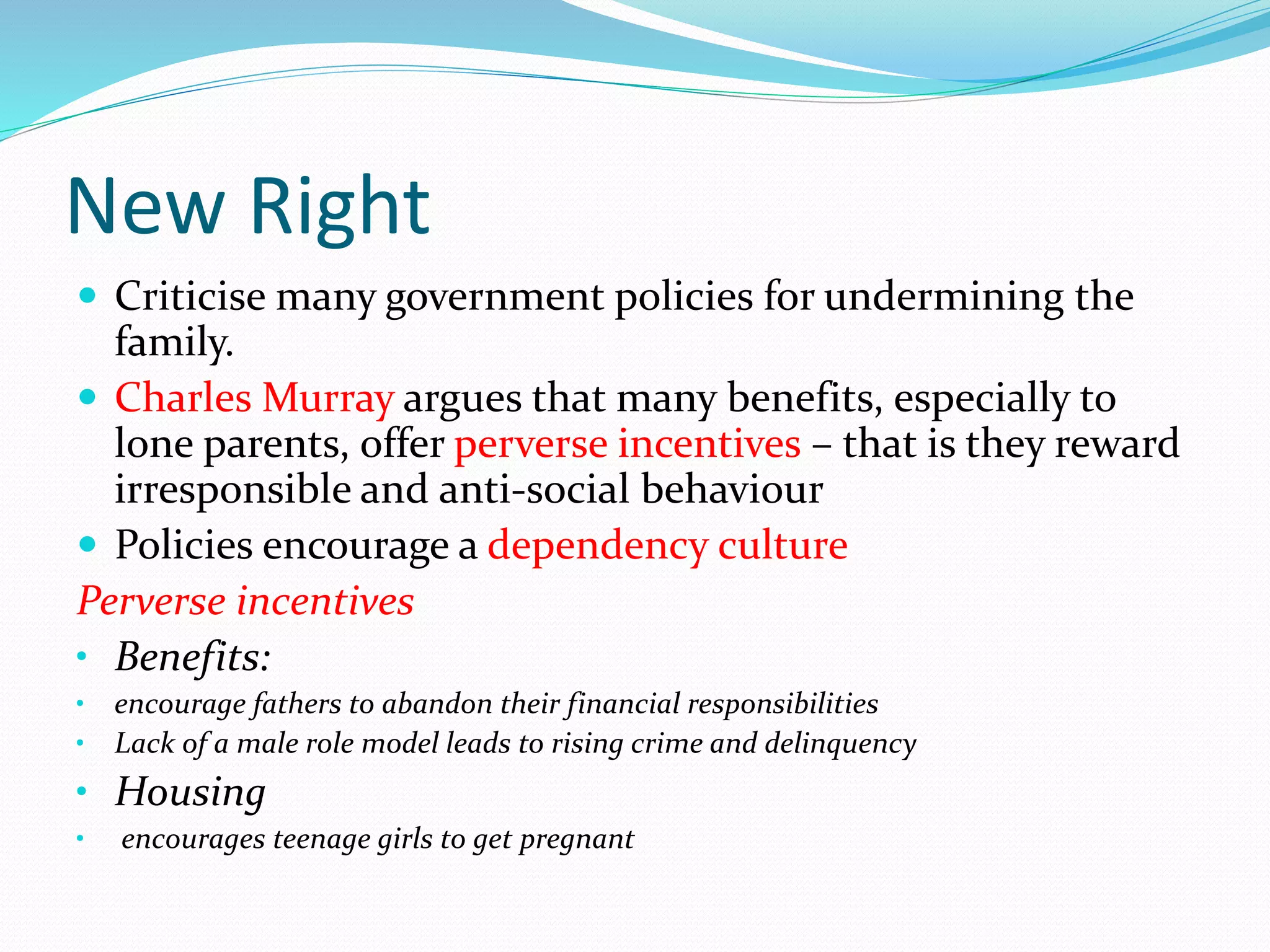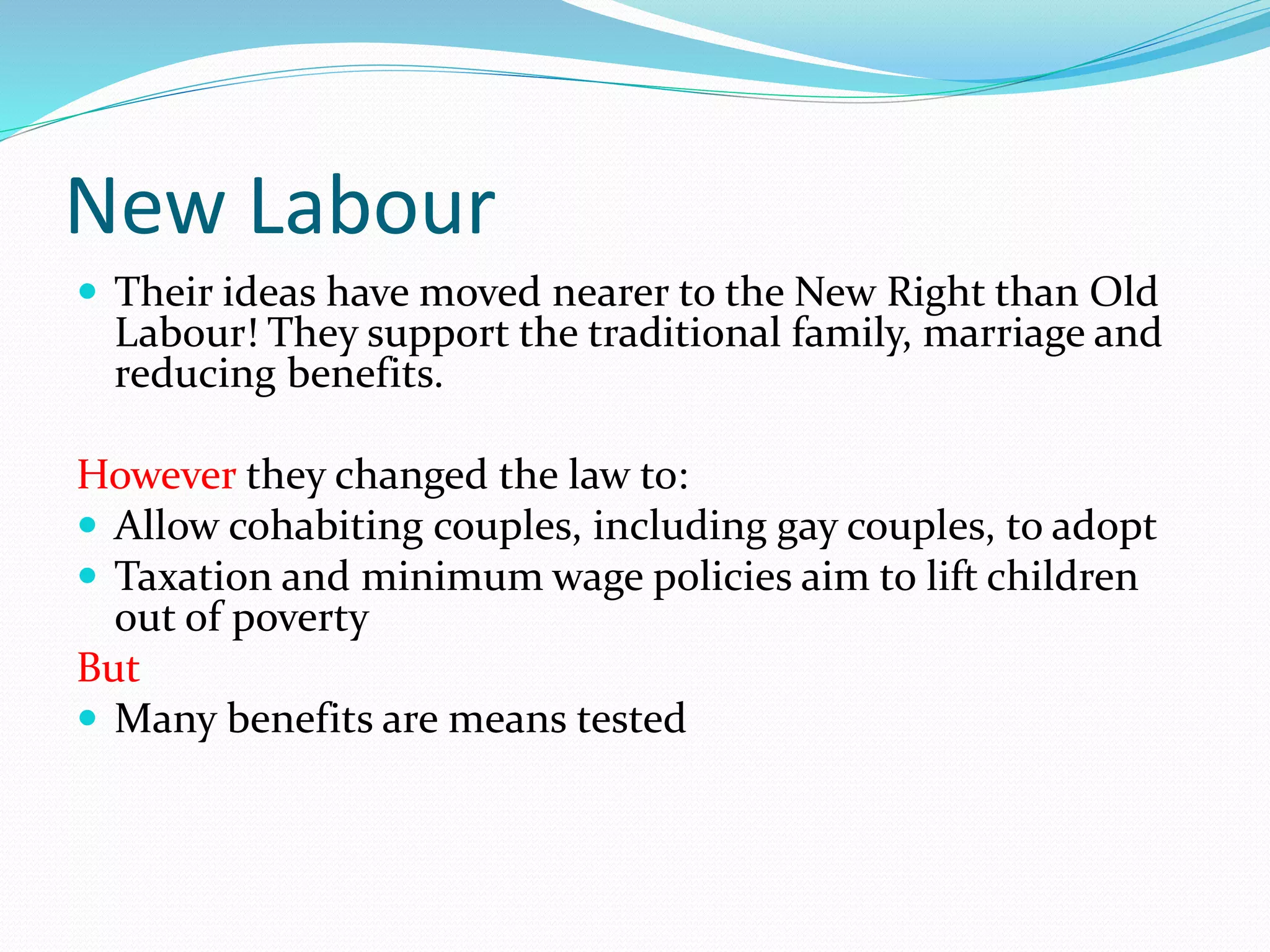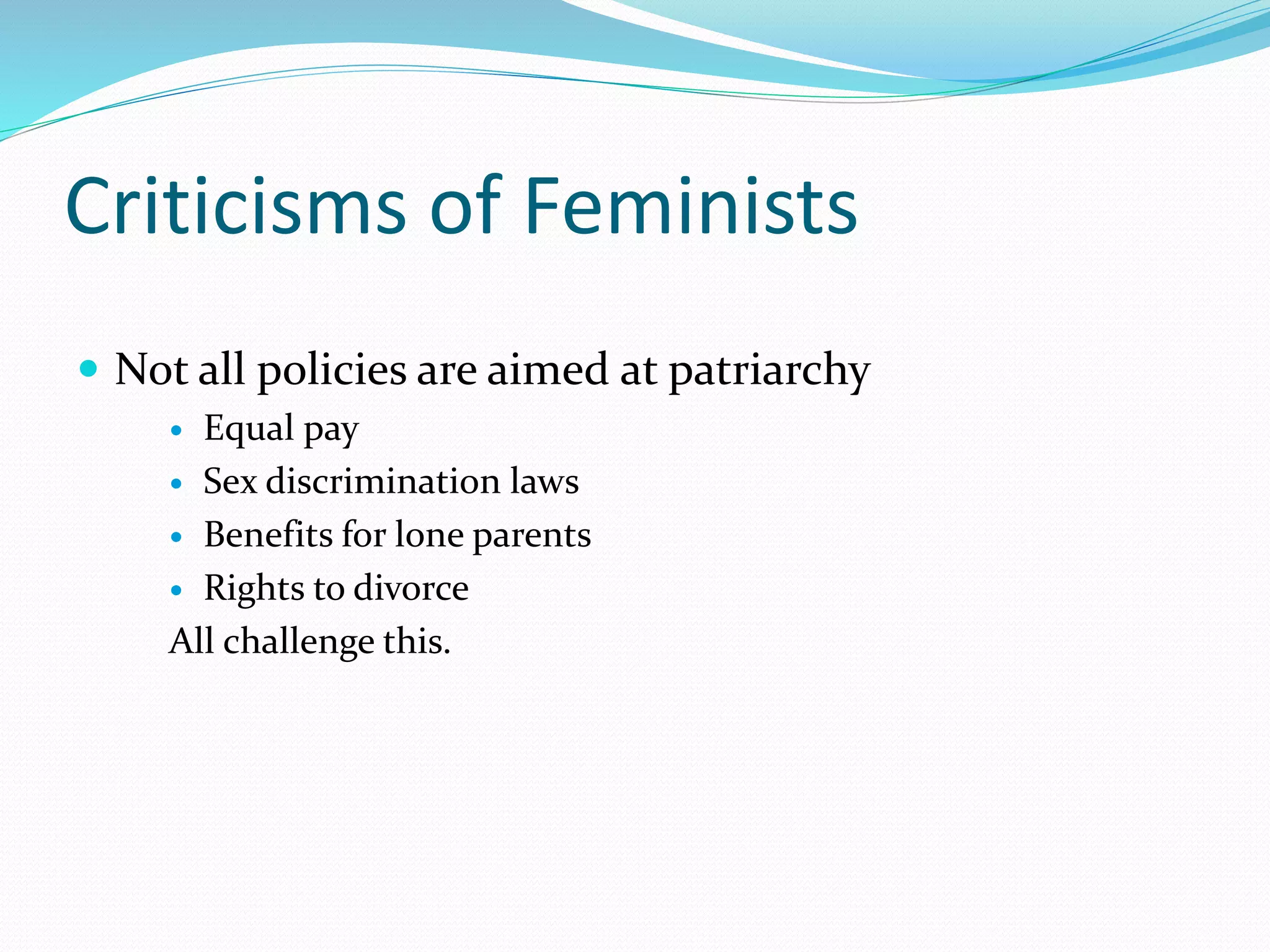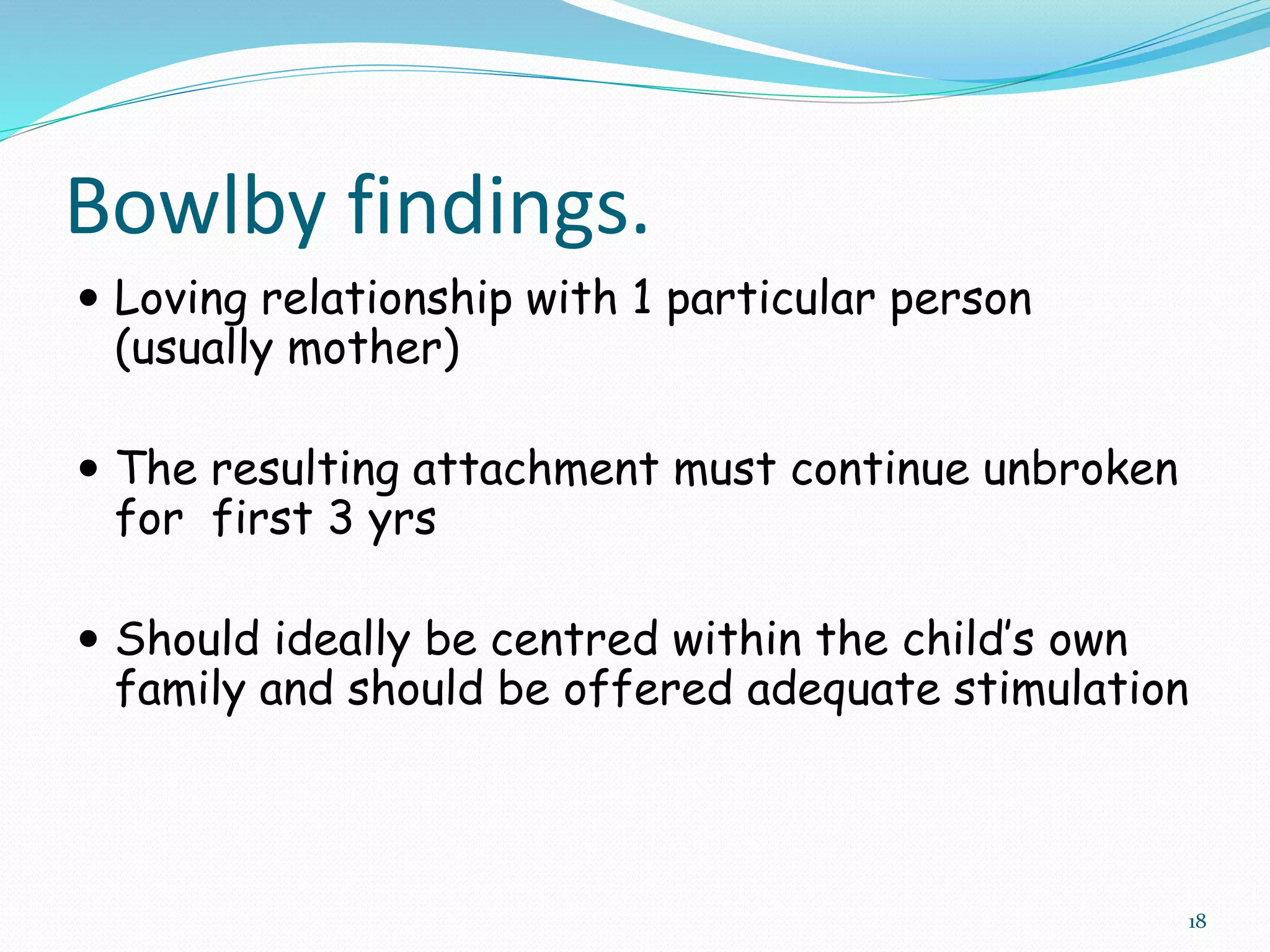The document discusses the development of family policy and legislation in the UK over the past 100 years. Key acts and reports that shaped the modern welfare state include the Poor Law Amendment Act of 1834, William Beveridge's 1942 report which led to the NHS and welfare benefits, and the Children Act of 1989. Sociological perspectives that have influenced understandings of the family include functionalism, Marxism, and feminism. Family theories such as Bowlby's attachment theory and Bronfenbrenner's ecological systems theory also provide frameworks for analyzing the relationship between children, families and their environments.

